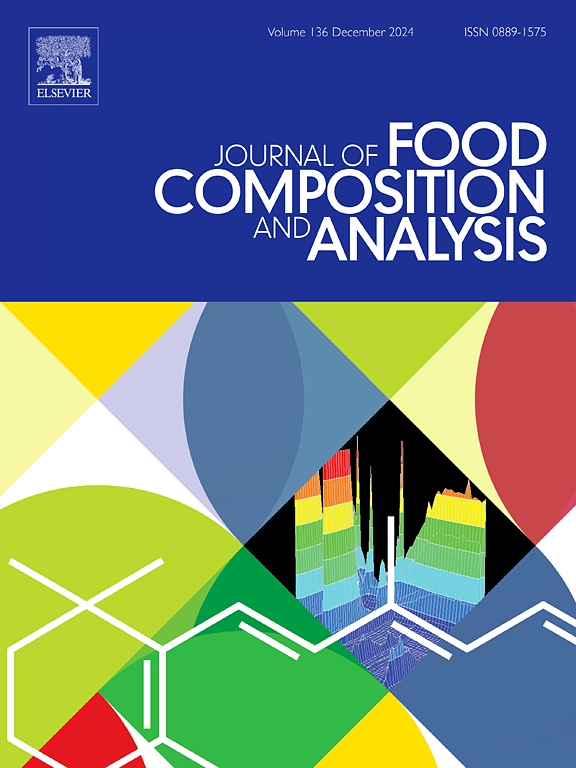Meat quality and lipid transformation profiling of Bactrian camel during postmortem chilled aging
IF 4
2区 农林科学
Q2 CHEMISTRY, APPLIED
引用次数: 0
Abstract
The present study investigated the effects of postmortem chilled aging on the meat quality and lipid profiling in Bactrian camel. Our results showed pH values and shear force decreased gradually over the chilled aging period, while the water-holding capacity and myofibrillar fragmentation index showed an increasing significantly (P < 0.05). With aging, L* (lightness) value increased from 36.50 to 40.80 (P < 0. 05), while a* (redness) and b* (yellowness) values gradually decreased. The peroxide value and thiobarbituric acid reactive species content were increased from initial value, 0.023 g/100 g and 0.25 mg/kg of muscle to 0.124 g/100 g and 0.75 mg/kg of muscle (P < 0.05), respectively, after six days of chilled storage. Chilled aging had a significant effect on the camel meat tissue structure and the intercellular space became larger on D7. There 2820 lipids were identified in D0, D3 and D7 camel meat samples, and Triacylglycerol (TG, 19.96%) was the most abundant lipid. During aging, the concentration of lipid subclasses had undergone varying degrees of changes, and there identified several significantly expressed lipids between different aging groups. Our results can provide data support for further elucidating the functional properties of lipids in the production and processing of camel meat.
求助全文
约1分钟内获得全文
求助全文
来源期刊

Journal of Food Composition and Analysis
工程技术-食品科技
CiteScore
6.20
自引率
11.60%
发文量
601
审稿时长
53 days
期刊介绍:
The Journal of Food Composition and Analysis publishes manuscripts on scientific aspects of data on the chemical composition of human foods, with particular emphasis on actual data on composition of foods; analytical methods; studies on the manipulation, storage, distribution and use of food composition data; and studies on the statistics, use and distribution of such data and data systems. The Journal''s basis is nutrient composition, with increasing emphasis on bioactive non-nutrient and anti-nutrient components. Papers must provide sufficient description of the food samples, analytical methods, quality control procedures and statistical treatments of the data to permit the end users of the food composition data to evaluate the appropriateness of such data in their projects.
The Journal does not publish papers on: microbiological compounds; sensory quality; aromatics/volatiles in food and wine; essential oils; organoleptic characteristics of food; physical properties; or clinical papers and pharmacology-related papers.
 求助内容:
求助内容: 应助结果提醒方式:
应助结果提醒方式:


